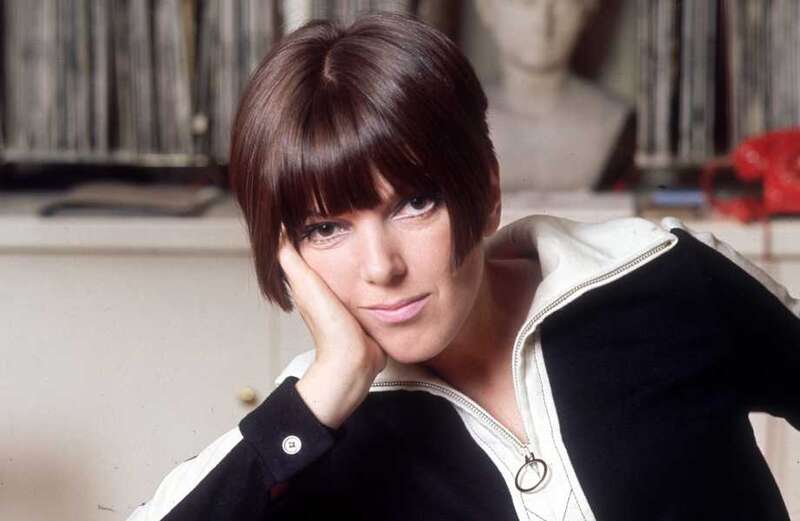WHEN asked how she felt when she looked back at her life, Dame Mary Quant once said: “I think to myself, ‘You lucky woman – how did you have all this fun?’”
The fashion designer, who has died aged 93 at her Surrey home according to her family, revolutionised not just what young women wore, but how they moved through the world. And in both cases, she made it fun.


Most famous for making the mini-skirt synonymous with the Sixties, the Londoner also liberated boobs from rigid bras, got women wearing trousers, and introduced waterproof mascara.
Everything was driven by the idea that women should not be hampered by style, but freed by it.
As Mary put it, she wanted her customers to be able to “run and catch the bus to get to work.”
 How to tackle thorny first date subjects… and why you should watch the waiter
How to tackle thorny first date subjects… and why you should watch the waiter
She also said: “I was born never wanting to grow up. I just didn’t like wearing grown-up clothes.”
Barbara Mary Quant was born on February 11, 1930 and grew up in Blackheath, South East London.
Her teacher parents were horrified when she announced she wanted to go to fashion school.
As a compromise, she studied art at Goldsmiths College, where she fell for posh fellow student Alexander Plunket Greene.
He turned out to be not just her soulmate but also a marketing genius, who came up with names for her products that were as much fun as the items themselves.
There was “Booby Trap” for a bra, for example, and “Starkers” for foundation.
Even better, he encouraged her to take risks, with his standard advice being: “Let’s be bad.”
After graduating, Mary worked as an apprentice hat-maker – mostly ironing veils – until Alexander inherited £5,000.
They used it to buy a shop in King’s Road, Chelsea – a street they made world famous.
Mary’s boutique, Bazaar, opened in 1955 and was an “immediate raging success” with its merchandise selling out in 10 days.
 Shoppers scramble to get their hands on hugely discounted toys in B&M's sale
Shoppers scramble to get their hands on hugely discounted toys in B&M's sale
Initially it mostly sold items the 25 year old had spotted at markets, but she soon began designing from scratch.
She later explained: “I didn't like what adult clothes were. They were too inhibiting. They didn't suit being young.
“I designed the sort of clothes I wanted to wear.”
That meant dresses that did not flap around the knees and slow you down.
Instead, like little girls’ frocks or dancer’s outfits, Mary’s designs were short, to free the legs.
She often is credited with inventing the miniskirt - but she said she was just giving customers what they wanted.
She said: "It was the girls on King's Road who invented the mini. I was making clothes which would let you run and dance and we would make them the length the customer wanted.
"I wore them very short and the customers would say, 'shorter, shorter'."


Her designs were also not cinched in at the waist. Wearers could actually breathe.
They were brightly coloured, and huge fun. By the early Sixties, “the mini” was iconic, and the Chelsea shop was rammed with other young people who were changing the world, like The Beatles.
Suddenly, Britain was at the epicentre of world fashion – a first.
Mary was such a superstar by 1962 that US retail giant JC Penney approached her to design for them.
The following year she launched her own mass-market line, Ginger Group, making her famous style accessible across the UK.
That was also revolutionary. As she explained in her 2012 autobiography: “In the early half of the 20th Century, fashion was the preserve of the grand, not something for ordinary, everyday women.”
By 1970, it was estimated that seven million women in the UK owned at least one item of her clothing.
Mary also signed licensing deals – unusual at the time – in order to bring out hugely successful ranges of make-up and bedding with her famous daisy logo.
From the mid-Seventies, her fashion star was overtaken, but her make-up remained a force for decades. And her influence never faded.
Meanwhile heavy-drinking Alexander Plunket Greene, who she married in 1957, died in May 1990 aged 57.
Mary said of their marriage in 2012: “He was a monstrous womaniser so it was noisy and bumpy.
“There was unhappiness, but I have to say there was also a great deal of happiness. He was such fun to be with.”
And in her autobiography she wrote of his death, when their son Orlando was 19: “I will never get over it.”
Mary was made a dame in 2015.
In 2023, she was given one of the highest gongs in the King’s first New Year Honours list, becoming a Companion of Honour.
By then she had also become the subject of the most successful fashion exhibition ever at London’s V&A Museum.
More than 200,000 people saw the 2019-20 show, many of them women who remembered the impact of her clothes and her spirit on their own lives.
In a 2021 documentary about Mary, former model Claire Stirling put it this way: “I don’t think people today realise quite how much she changed for women – and how fast.
“Everything she did was about making us feel more comfortable but also more liberated. I can’t tell you how exciting that felt.”



































